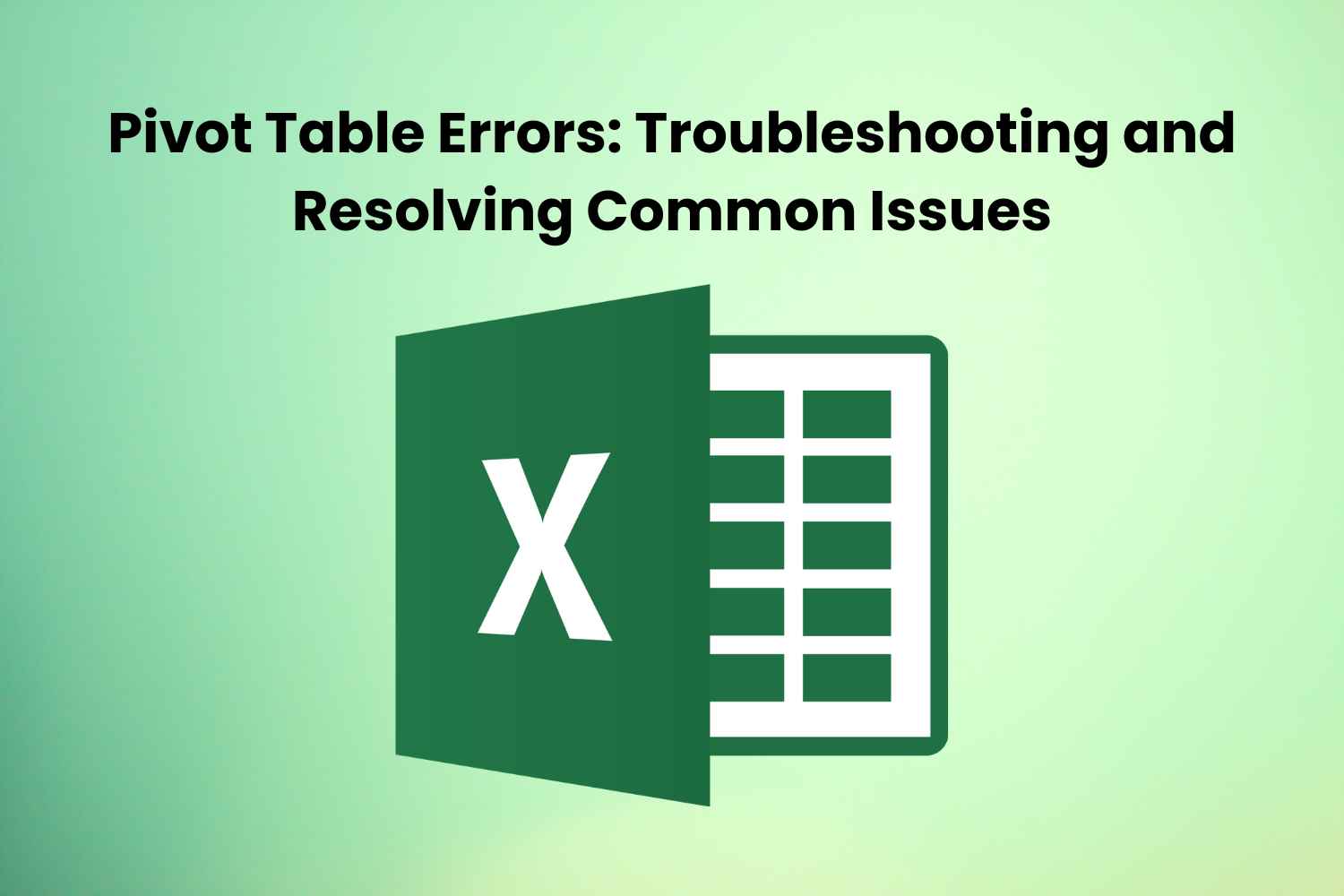Among data analysis tools, Microsoft Excel is the current industry leader. Excel can turn a pile of unstructured data into valuable insights. The Pivot Table is one such vital feature that many Excel aficionados use.
This blog helps to troubleshoot and fix the common issues that keep appearing when one is working with pivot tables.
Whether you are an Excel expert or a novice who is learning How to Create a Pivot Table in Excel, maximising the full potential of the tool depends on recognising the mistakes and learning how to avoid them.
Table of Contents
- How to Create a Pivot Table in Excel
- Inconsistent Data Formats
- Blank Cells and Errors
- Incomplete Refreshing
- Pivot Cache Conundrum
- Field Names and Layout Changes
- Unwanted Filters and Groupings
- Conclusion
How to Create a Pivot Table in Excel
Before going into troubleshooting, let us review the principles. The key to effective data analysis is understanding how to make a pivot table in Excel. Choose your data range first, then go to the “Insert” tab and pick “PivotTable.” Select the range, choose the location, and you’re done! You can now use your pivot table.
Let’s now investigate the common challenges that could prevent you from using Excel smoothly.
Inconsistent Data Formats
Inconsistent data formats are sometimes the first thing to suspect when your pivot table starts functioning strangely. Data homogeneity is crucial to Excel; any variances can result in mistakes. For instance, Excel may have trouble appropriately interpreting the data if your date formats differ within the same column.
Resolution
To address this problem, ensure that every data entry is consistent. Standardise date formats, format cells accordingly, and convert text to numbers as necessary. Paying attention to the details now can prevent mistakes from spiralling out of control later.
Blank Cells and Errors
Blank cells in your dataset might cause major problems when constructing pivot tables. Excel may see these blanks as real data, which could result in erroneous calculations and other problems.
Resolution
By completing or removing blank cells from your dataset, you can avoid making mistakes with pivot tables. To ensure a more seamless Pivot Table creation process, you can substitute blanks with zeros or placeholders using the “IF” function or other techniques.
Incomplete Refreshing
Because they are dynamic, pivot tables depend on precise data refreshes to stay current. Errors frequently arise from outdated data sources, which freezes the pivot table in place.
Resolution
To ensure that your pivot table is up to date, regularly refresh your data source. To ensure your analysis is up to date, use the “Refresh” button or configure automatic refresh settings. By taking this one step, you may guarantee the accuracy of your findings and avoid discrepancies.
Pivot Cache Conundrum
Excel’s internal data store, the Pivot Cache, occasionally becomes outdated or corrupted. This may lead to unforeseen mistakes and difficulties when modifying your pivot table.
Resolution
Refresh or rebuild the Pivot Cache to fix any related issues. Proceed to the “Options” menu, choose “Change Data Source,” and perform a cache refresh. If issues continue, try wiping the Pivot Table and starting over to create a new connection with the data source.
Field Names and Layout Changes
After constructing a pivot table, changing the names of the fields or the arrangement of your data source can be confusing. Excel’s inability to map the changes could lead to inaccuracies in your analysis.
Resolution
Before changing your data source, refresh the Pivot Table to align it with the current structure. Consider constructing the pivot table again to prevent compatibility problems if there are major changes. By taking a small precaution, you can avoid a headache-inducing troubleshooting session.
Unwanted Filters and Groupings
Your Pivot Table’s accuracy may be distorted by inadvertent filters or groupings, which could cause confusion and even inaccuracies in your analysis.
Resolution
Make sure to look for and eliminate any unneeded groupings or filters frequently. Before making a pivot table, make sure your data source is in its original, unaltered state. This easy step might simplify your analytical approach and avoid needless problems.
Also Read: 7 Best Practices To Promote Your Business Online
Conclusion
When it comes to data analysis, perfecting the Pivot Table is like learning a beautiful waltz. Knowing how to make an Excel pivot table is not enough to guarantee a flawless result; you must also know how to troubleshoot and resolve frequent errors.
You can get the most out of Excel by managing Pivot Cache, handling field name changes, fixing blank cells, renewing data sources, resolving discrepancies in data formats, and keeping a clean data environment.
Excel’s extensive feature set enables users to convert unprocessed data into insightful knowledge. Recall that every obstacle you encounter when navigating Pivot Table errors presents an opportunity to improve your abilities and broaden your comprehension of this instrument.
With this knowledge, you will be prepared to troubleshoot and handle any issues with your Pivot Table with grace the next time they arise.

